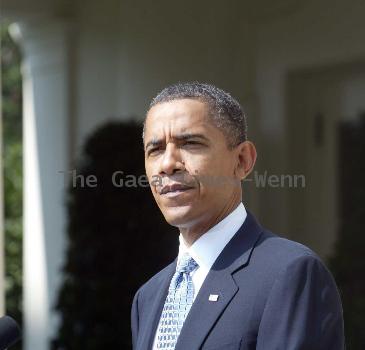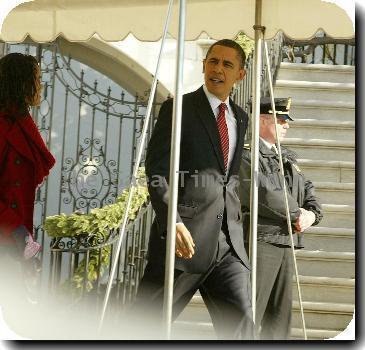Howitzers, office supplies, TVs _ everything must go as US forces pack up to leave Iraq
By Rebecca Santana, APTuesday, August 3, 2010
Departing US troops pack millions of items in Iraq
JOINT BASE BALAD, Iraq — Everything from helicopters to printer cartridges is being wrapped and stamped and shipped out of Iraq. U.S. military bases that once resembled small towns have transformed into a cross between giant post offices and Office Depots.
Soldiers who battled through insurgents and roadside bombs are now doing inventory and accounting. Their task: reverse over the course of months a U.S. military presence that built up over seven years of war.
“We’re moving out millions of pieces of equipment in one of the largest logistics operations that we’ve seen in decades,” President Barack Obama said in a speech Monday hailing this month’s planned withdrawal of all U.S. combat troops from Iraq.
The orderly withdrawal is a far cry from the testosterone-fueled push across the berm separating Kuwait and Iraq, when American Marines and soldiers pushed north in the 2003 invasion, battling Saddam Hussein’s army while sleeping on the hoods of their vehicles and eating prepackaged meals.
“I think it’s probably more challenging leaving, responsibly drawing down, than it is getting here, because you just have to figure out where everything is and getting it out of here. Are there enough airplanes, ships, containers, and do we have enough time to do that and meet the president’s mandate?” said Col. David F. Demartino, who is responsible for infrastructure and support services at Balad, which is home to 25,000 troops and civilians.
In essence the drawdown has been happening since late 2008. That’s when the U.S. started to reduce its numbers following the surge, which raised the American presence to about 170,000. Now the U.S. has just under 65,000 troops in the country, and the withdrawal is reaching a more furious pace as the August deadline approaches.
Only 50,000 U.S. service personnel will remain after August. All troops are supposed to leave and all bases close by the end of next year, unless Iraq asks the U.S. to renegotiate their agreement to allow a continued American presence.
In mid-July, JSS Mahmoudiya - once a U.S. position just south of Baghdad in one of Iraq’s most dangerous areas - was a ghost town. Tents were abandoned, covered with foam to retard fire, and the white-walled cafeteria was barren except for a few refrigerators holding drinks. The joint operations command was stripped of almost everything, including the big-screen TVs on which military personnel once watched operations.
The next day, it was handed over to the Iraqi government to become an army facility.
Each handover involves a painstaking process of inventorying everything on the base that the soldiers aren’t taking with them. Every item is assessed to see if it can be moved and if so, whether it is needed anywhere else in the country. Many of the materials - water tanks, generators, and furniture - are eventually donated to the Iraqi government. As of July 27, $98.6 million worth of equipment has been handed over, most to the Iraqi army and Interior Ministry.
More than 400 bases are being closed down or handed over to the Iraqi military. By September, the American military will have fewer than 100 bases in the country, down from a high of 505 in January 2008.
Some of these bases look somewhat like small towns with elaborate dining facilities serving tacos and crab legs and gyms with rows of treadmills.
About half the vehicles - what the military describes as “rolling stock” - that have left Iraq have gone to Afghanistan. More than 180,000 items like weapons or communications equipment have also been sent to Afghanistan over the past year.
In the past, when troops rotated into Iraq they brought some weapons and other equipment with them. But they inherited most of their equipment - including Humvees and other armored vehicles - from the unit they replaced.
But now as troops aren’t being replaced, the last guys out must leave their equipment at the door to be redistributed, whether back to the U.S., other units in Iraq or to Afghanistan.
That makes places like the Central Receiving and Shipping Point at Balad “the center of the universe,” as one visiting officer nicknamed it. Equipment such as howitzers and helicopter blades or shipping containers and pallets arrives for redistribution.
Sgt. 1st Class Stephen Latch runs the CRSP. He spent his first tour in Iraq with the infantry kicking down doors and hunting down members of Saddam’s regime. The only time he really thought about logistics was to wonder when his ammo and food would arrive.
Now he’s at the center of the logistical version of a major offensive, helping ensure that the equipment goes south to Kuwait, the main exit point. Most material is driven down the heavily guarded main highway from Baghdad to the border, a more than 300-mile route. So far there have been no reports of significant attacks on any convoys.
Latch said when he started his deployment last summer, they moved an average of about 2,500 items a month. Now he’s moving almost six times that amount, and it’s mostly going south.
And people want it faster. It used to be something could sit in the CRSP yard for 45 days before heading to Kuwait, Latch said. But now if it’s there for five days, people start calling and want to know why.
“We have a very, very aggressive attitude,” Latch said. “Everybody knows the stuff is going south. It’s going to move no matter what. You can either fight the current or you can just push as hard as you can to get that stuff down there fast.”
The drawdown has not been without hiccups. The military was embarrassed by a report in the Times of London that contractors did not properly dispose of environmental waste removed from U.S. military bases.
But U.S. commanders say they are addressing problems and are confident they will be able to meet the president’s deadline.
Demartino said that while going through shipping containers, buildings and offices at Joint Base Balad, soldiers have been stunned at the materials hoarded over the years in nooks and crannies all over the base.
The biggest surprise was the thousands of printer cartridges tucked away by soldiers worried they would one day run out.
“I walked through a few of these buildings, and I was thinking this is like Office Depot, and it’s just people going ‘I don’t want to run out. Let’s get them!’” he said. “I think it’s the mindset of ‘We’re never going to leave.’”
Tags: Afghanistan, Asia, Barack Obama, Central Asia, Iraq, Joint Base Balad, Kuwait, Middle East, Military Facilities, North America, Troop Withdrawals, United States


